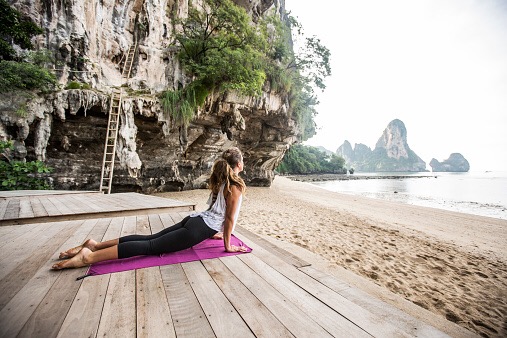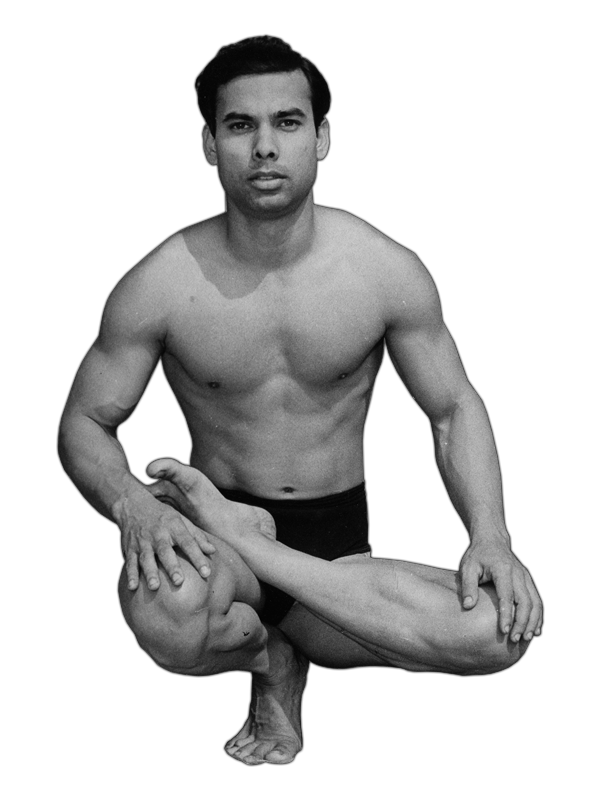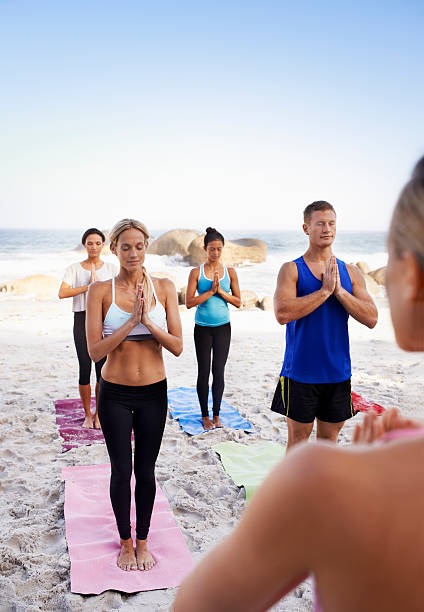Image by Getty Images
Although I’ve been a yoga teacher for many years, I started as a student and I will remain a student (first and foremost).
As a student, I have learned a few things about how to maximize my yoga practice. And, I would like to share them with you.
Don’t get me wrong, my students and other students around me inspire me everyday. However, I have come across students who are almost about to injure themselves or those who are not taking full advantage of the powerful benefits of yoga.
This is what I would like all students to know:
1. Be true
I’m such a fan of students giving their all, it’s very inspiring. But, there’s a fine line between effort and force. You can give 100% effort and be safe but you can’t give 100% force and be safe. If it’s not time to be in the full expression of the pose, give it time. Don’t force anything.
2. Enjoy the class.
When I first started practicing, I would torment myself in my head. I would ask myself questions like, when will this be over? Why is it so hot in a hot room? What is that smell? Why does the guy next to me keep farting? My mind would let loose. I see my students doing the same thing, letting their minds run their yogic experience. One of the best things that you can do in a yoga class is enjoy it. Enjoying the class can allow your muscles and tension to relax. You might also leave with a smile on your face and a yoga high.
3. Learn a bit about anatomy.
Yoga teachers are human and with any human, we perfect things over time. Expecting a fresh yoga teacher to know everything is like expecting a baby to walk at two-months-old. When I started practicing, I would get annoyed with teachers for not knowing what they were talking about, only ruining my own practice. I found peace by doing my own research and allowing teachers be human and learn over time.
4. Form first.
Like I mentioned before, being true to your practice is important. Not being true to someone else’s. It’s great when practitioners are able to do a forearm stand; it’s also great when a practitioner can sit in stillness. Get rid of the notion that you have to hurt and push your body to find peace. You will find your fullest posture expression by working with your anatomy, not someone else’s.
4 choses que tous les étudiants de yoga doivent savoir
Bien que je sois professeur de yoga depuis de nombreuses années, j'ai commencé comme étudiant et je resterai un étudiant (avant tout).
En tant qu'étudiant, j'ai appris quelques choses sur la façon de maximiser ma pratique du yoga. Et, j'aimerais les partager avec vous.
Ne vous méprenez pas, mes étudiants et d'autres étudiants autour de moi m'inspirent tous les jours. Cependant, j'ai rencontré des étudiants qui sont sur le point de se blesser ou qui ne profitent pas pleinement des avantages puissants du yoga.
C'est ce que je voudrais que tous les élèves sachent:
1. Soyez vrai
Je suis un fan des étudiants qui donnent tout, c'est très inspirant. Mais, il y a une fine ligne entre l'effort et la force. Vous pouvez donner 100% d'effort et être en sécurité, mais vous ne pouvez pas donner 100% de force et être en sécurité. Si ce n'est pas le moment d'être dans la pleine expression de la pose, donnez-lui le temps. Ne forcez rien.
2. Profitez de la classe.
Quand j'ai commencé à pratiquer, je me torturais dans ma tête. Je me poserais des questions comme, quand cela sera-t-il terminé? Pourquoi est-il si chaud dans une pièce chaude? Quelle est cette odeur? Pourquoi le gars à côté de moi continue à péter? Mon esprit allait se déchaîner. Je vois mes étudiants faire la même chose, laissant leurs esprits courir leur expérience de yoga. Une des meilleures choses que vous pouvez faire dans un cours de yoga est d'en profiter. Profiter de la classe peut permettre à vos muscles et à votre tension de se détendre. Vous pouvez également partir avec un sourire sur votre visage et un yoga élevé.
3. En savoir un peu plus sur l'anatomie.
Les professeurs de yoga sont humains et avec n'importe quel humain, nous perfectionnons les choses au fil du temps. S'attendre à ce qu'un nouveau professeur de yoga sache tout, c'est comme attendre un bébé à marcher à deux mois. Quand je commençais à pratiquer, je me fâchais avec les professeurs de ne pas savoir de quoi ils parlaient, ne faisant que ruiner ma propre pratique. J'ai trouvé la paix en faisant mes propres recherches et en permettant aux enseignants d'être humains et d'apprendre avec le temps.
4. Formez d'abord.
Comme je l'ai déjà mentionné, il est important d'être fidèle à votre pratique. Ne pas être fidèle à quelqu'un d'autre. C'est génial quand les pratiquants sont capables de faire un stand d'avant-bras; c'est aussi génial quand un pratiquant peut s'asseoir dans le calme. Débarrassez-vous de la notion que vous devez blesser et pousser votre corps à trouver la paix. Vous trouverez votre expression de posture la plus complète en travaillant avec votre anatomie, pas celle de quelqu'un d'autre.
4 cosas que todos los estudiantes de yoga necesitan saber
A pesar de que he sido profesor de yoga durante muchos años, comencé como estudiante y seguiré siendo un estudiante (en primer lugar).
Como estudiante, aprendí algunas cosas sobre cómo maximizar mi práctica de yoga. Y me gustaría compartirlos con usted.
No me malinterpreten, mis estudiantes y otros estudiantes a mi alrededor me inspiran todos los días. Sin embargo, me he encontrado con estudiantes que están a punto de lastimarse o que no aprovechan al máximo los poderosos beneficios del yoga.
Esto es lo que me gustaría que todos los estudiantes supieran:
1. Sé verdadero
Soy tan fanático de que los estudiantes lo den todo, es muy inspirador. Pero, hay una delgada línea entre el esfuerzo y la fuerza. Puedes dar el 100% de esfuerzo y estar seguro pero no puedes dar el 100% de fuerza y estar a salvo. Si no es el momento de estar en la expresión completa de la pose, dale tiempo. No fuerces nada.
2. Disfruta la clase.
Cuando comencé a practicar, me atormentaba en mi cabeza. Me haría preguntas , ¿cuándo terminará esto? ¿Por qué hace tanto calor en una habitación caliente? ¿Que es ese olor? ¿Por qué el hombre a mi lado sigue tirando un pedo? Mi mente soltaría. Veo a mis alumnos haciendo lo mismo, dejando que sus mentes ejecuten su experiencia de yoga. Una de las mejores cosas que puedes hacer en una clase de yoga es disfrutarlo. Disfrutar de la clase puede permitir que tus músculos y tensión se relajen. También puede irse con una sonrisa en la cara y un yoga alto.
3. Aprende un poco sobre la anatomía.
Los profesores de yoga son humanos y con cualquier ser humano, perfeccionamos las cosas con el tiempo. Esperar que un maestro de yoga nuevo sepa todo es como esperar que un bebé camine a los dos meses de edad. Cuando comencé a practicar, me molestaba con los maestros por no saber de qué estaban hablando, solo arruinando mi propia práctica. Encontré la paz haciendo mi propia investigación y permitiendo que los maestros sean humanos y aprendan con el tiempo.
4. Forma primero.
Como mencioné antes, ser fiel a tu práctica es importante. No ser fiel a los de otra persona. Es genial cuando los practicantes son capaces de hacer una parada de antebrazo; también es genial cuando un practicante puede sentarse en quietud. Deshágase de la idea de que tiene que herir y empujar a su cuerpo para encontrar la paz. Encontrarás la expresión más completa de tu postura trabajando con tu anatomía, no con la de otra persona.
















